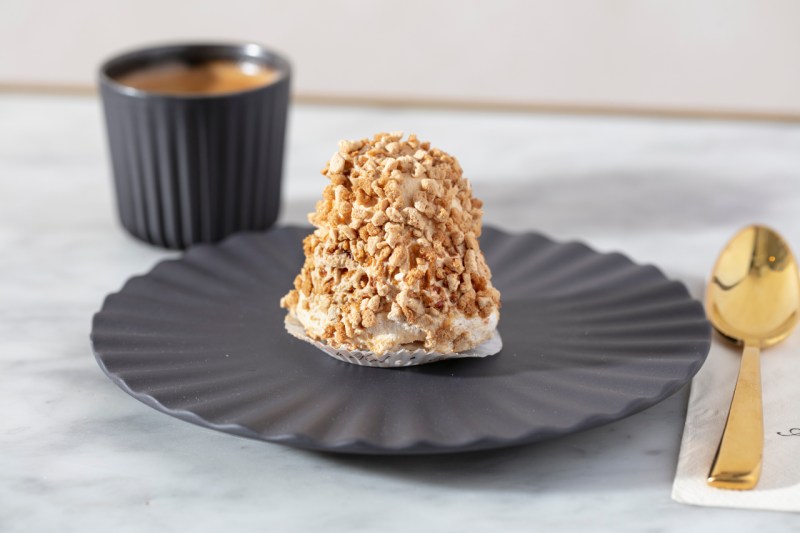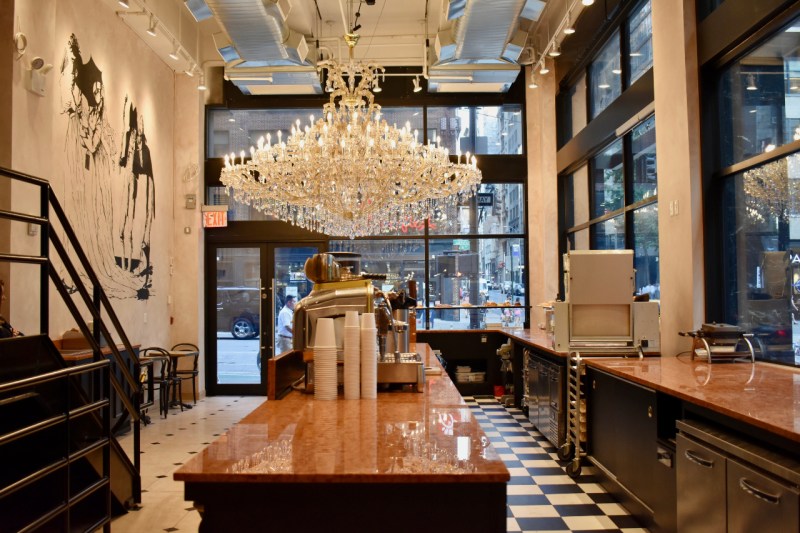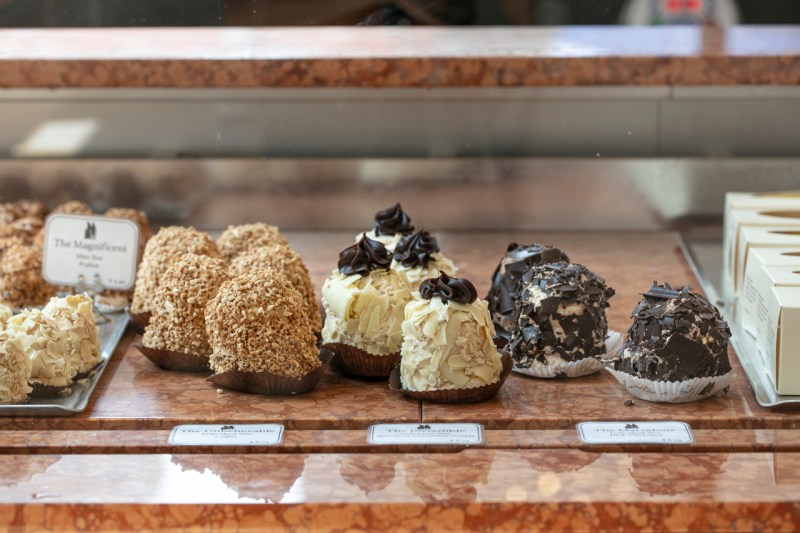
Marvelous by Fred, an artisanal French pastry shop, is famous worldwide for a unique pastry—the merveilleux. Shaped like a chocolate truffle, this dessert is sweet and creamy with an airy texture that melts in your mouth. With locations around the world, Marvelous by Fred has recently opened a second flagship location in Manhattan with the intention of showcasing the merveilleux as its signature item.
A pastry that traces its origins to 18th-century France, the merveilleux is a combination of meringue, whipped cream, and chocolate. But the merveilleux at Marvelous by Fred is not simply a recipe lifted from the pages of history. Instead, this is a modern interpretation, featuring a combination of innovative flavors and techniques.
From France to America

Marvelous by Fred (Aux Merveilleux de Fred in France) was founded by pastry chef Fred Vaucamps in 1995. Vaucamps started his pastry career young—at only fourteen years old as a pastry apprentice in Northern France. After years of experience, Vaucamps opened the first Marvelous by Fred in the small town of Lille before eventually opening in Paris in 2008. What makes Marvelous by Fred unique is its curated menu, focusing on a few pastries instead of the dozens of items standard at other French patisseries.
Related Guides
- 11 Best Dessert Recipes That Will Make You Crave More
- The 9 Best Vegan Ice Creams to Satisfy Your Sweet Tooth
- How To Make A Perfect Spiked Milkshake in 2021
The key to Vaucamps’ success is the merveilleux, a pastry consisting of a meringue shell enveloped by whipped cream and chocolate shavings. The creation of the merveilleux was inspired by post-French Revolution aristocrats who called themselves Merveilleuses (“marvelous ladies”) and Incroyables (“incredibles,” for men). Before Vaucamps, the merveilleux was relatively unknown in modern France. However, Vaucamps believed the merveilleux to be underrated and began a journey to recreate the pastry, making it lighter and producing a variety of flavors. Soon, the merveilleux became the top-selling pastry in Paris, a remarkable feat considering the competitive nature of the pastry scene in French cuisine. Today, there are 15 stores in Paris and 46 locations globally, elevating Marvelous by Fred to the status of the fastest-growing high-end artisan pastry brand in the world.
In 2016, the brand came to America, debuting in the West Village, Manhattan with a second location in August 2021 in bustling midtown Manhattan. This new, larger location was designed by Vaucamps and his wife with inspiration from the post-French Revolutionary period. The interior is opulent, centered by a large ten-foot-wide Bohemian crystal chandelier (a replica of Maria Theresa’s iconic coronation chandelier from 1711). Another key element to the midtown location is the open floor plan which allows guests and pedestrians full view of the pâtissiers at work. Each item at Marvelous by Fred is made in-house daily with non-processed ingredients and elevated techniques.
The Merveilleux

While Marvelous by Fred has an array of sandwiches and pastries (six different brioches, four types of croissants, various meringue flavors, and buttercream waffles), the highlight is undoubtedly the merveilleux. The merveilleux comes in seven different flavors, including: Le Merveilleux (classic), L’Incroyable (white chocolate), L’Impensable (coffee), L’Excentrique (cherry), Le Magnifique (nut), and Le Sans-Culotte (caramel), as well as rotating limited time “L’éphémère” flavor. Each of these flavors also come in threes sizes: mini, individual, and a large meant for catering or gifts.
Although the merveilleux is a dessert, it doesn’t pack the same caloric richness of other pastries. The merveilleux is made without butter, oil, or dough and at under 100 calories for the mini merveilleux, is comparatively light for a dessert. Like all pastries at Marvelous by Fred, quality is paramount. When possible, ingredients are sourced locally (with the exception of certain butter and specialty sugar brands imported from France). Creating the perfect merveilleux was not an easy process and Vaucamps experienced plenty of “luck, failure, experiments, and success” before the current versions emerged. With the opening of this new midtown location, Vaucamps hopes to further expand his brand with the dream of getting even more people excited about this truly distinctive French dessert.



